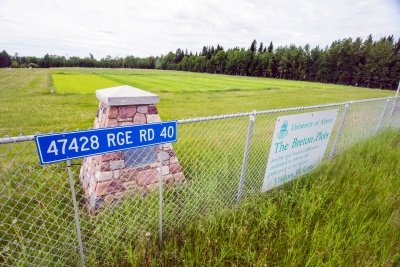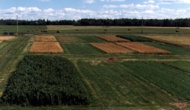|
| Welcome to Breton |
Village Office |
Council Minutes |
Living in Breton |
Report a Problem |
Doing Business |
Tourism & Maps |
Calendar of Events |
780-696-3636 SEND US AN E-MAIL |
|
Breton Soil Plots The earliest agricultural settlements in Alberta occurred in the prairie or parkland belts where Chernozemic soils and Brown and Black Solonetzic soils dominated. Settlement was favoured in these regions because of access from the rapidly expanding railroad system and the ease of preparing the land for arable agriculture. The earliest agricultural settlements in Alberta occurred in the prairie or parkland belts where Chernozemic soils and Brown and Black Solonetzic soils dominated. Settlement was favoured in these regions because of access from the rapidly expanding railroad system and the ease of preparing the land for arable agriculture.Expansion into the forest belt became significant in the period 1910 - 1920, often following clearing by lumbering companies. Of the settlers who came to the forest belt, some were sons of families who had pioneered earlier in more easterly parts of Canada and the United States, some were abandoning recently acquired homesteads in the arid prairies, some were veterans of World War I and many were escaping from crowded and depressed conditions in Europe. They settled an area where there was very little experience with arable agriculture and almost no information about the soils. Indeed, it was apparently assumed that the soils must be very productive because they supported good stands of white poplar (Populus tremuloides) and white spruce (Picea glauca). It did not take many years to discover otherwise! The Breton Classical Plots were established in 1929 near the Village of Breton, 100 km southwest of Edmonton, by the Department of Soils, University of Alberta. These plots were originally designed to find 'a system of farming suitable for the wooded soil belt'. Today, the Breton Plots provide a model of how diverse cropping practices affect typical Gray Luvisolic soils.
Mr. Ben Flesher provided the land for the first plots in 1929. Ben did many of the plot operations including tillage, seeding and harvesting. The 20-acre parcel of land on which the Breton Plots are located was purchased by the University of Alberta in 1946. The Breton Classical Plots are the only continuous, long-term plots on Gray Luvisols in Canada and possibly in the world. Many farmers and rural communities have benefited from the work done over the past almost 90 years. Experiments have included management of straw/tillage and phosphorus fertilizer. Currently, the plots are being used to assess the interaction among global environment, crop productivity and soil quality. The Breton Plots are a part of the North American Great Plains Network and the Global Change and Terrestrial Environment Soil Organic Matter Network. The research site is well documented and has a meteorological station. The Breton Plots are a living library containing much information about how management practices have affected soils and crops. Some of the information has been uncovered in past research; much awaits to be discovered by future researchers. These Soil Plots are an Alberta Registered Historic Resource.
|
| OFFICIAL WEBSITE OF THE VILLAGE OF BRETON © | WWW.BRETON.CA | WEBSITE BY WINDSOR GRAPHICS | ||
| VILLAGE OF BRETON, BOX 480, BRETON ALBERTA CANADA T0C 0P0 | PHONE: 780-696-3636 | FAX: 780-696-3590 | EMAIL: admin@breton.ca | ||||


